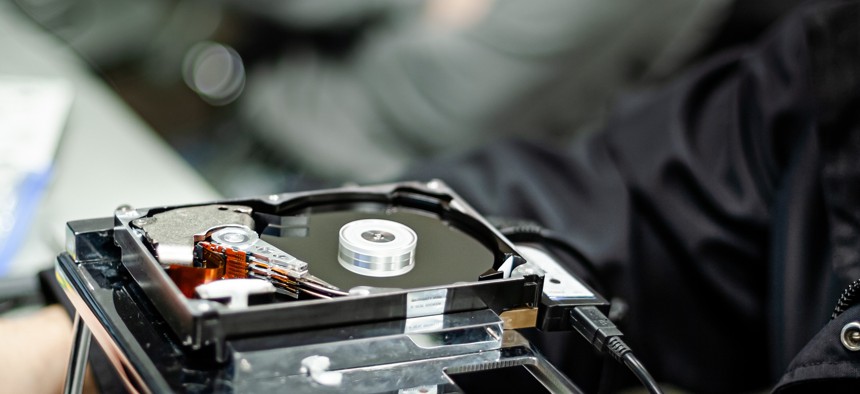How The Legal Aid Society bridges the technology gap

Dismantled hard drive sits in front of person Shutterstock
With the power to use warrants to collect electronic evidence and access to forensic technology, law enforcement has a built-in technological advantage over public defenders. But the Legal Aid Society is working hard to bridge that gap, the New York Times reports.
In 2013, the Legal Aid Society realized it needed the same kinds of forensics devices and software used by law enforcement. The organization created its own forensic lab, stocked with $100,000 in equipment – a hefty cost for most public defenders – but still far below the $10 million the Manhattan district attorney’s office spent to build its lab in 2016. The lab can be especially valuable early on in a client’s case, finding evidence that can help them avoid charges or leave jail. One client managed to have a case against him dismissed when he provided the nonprofit access to his smartphone, which placed him five miles away from the scene of the alleged assault.
The Times found no other public defender offices or organizations with a comparable approach to forensics, though a few had invested in an extraction device or internal expert. Part of that can be attributed to The Legal Aid Society’s resources: Crain’s New York listed it as one of the city’s top 20 largest nonprofits in 2017, based on operating budget. The organization oversees $272 million in operating expenses.
